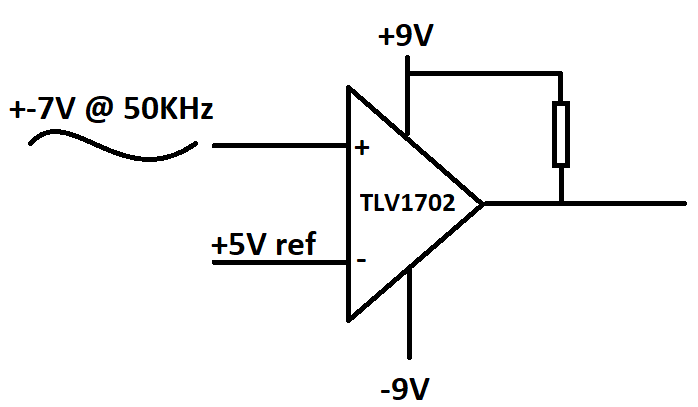Other Parts Discussed in Thread: LM311, LM311-N, , TLV1701, LM339
I have a circuit like in the attachment. What I need is to get only positive voltage at the output. What are my options? Using a serial diode at the output at this frequency distorts the pulse shape of the output signal, using a parallel diode to the load does not give a perfect zero based signal, changing -9V supply to 0V(gnd) is not allowed as far as I know if there is negative signal at the input (or am I false?) So what can I do? Thanks.


